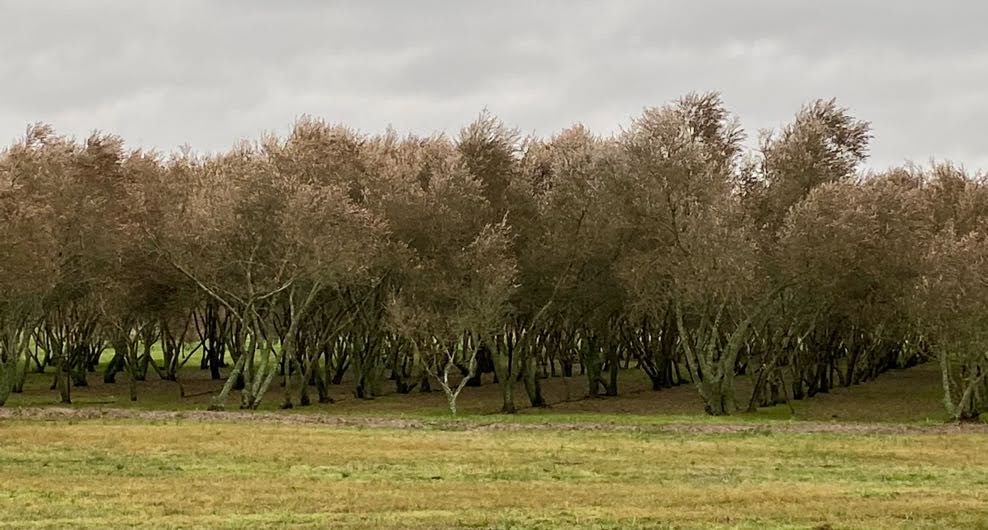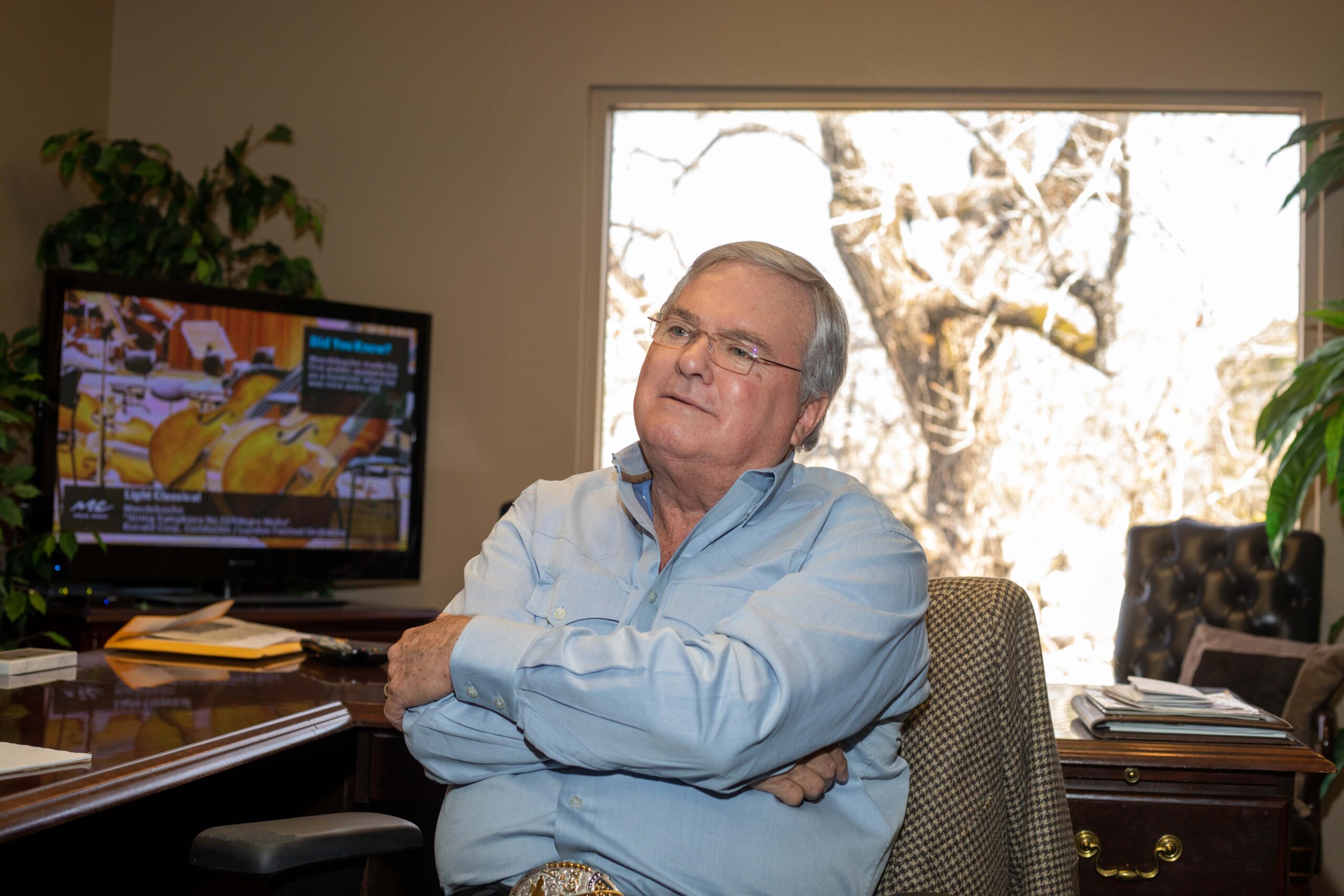Lone Star Olive Ranch has been growing thousands of olive trees and producing olive oil for over a decade. Based in Madisonville, Texas, the ranch, started by Christine McCabe and Cathy Bernell, is one of only a few olive ranches in the state of Texas. Having already branched out into other areas, the effects of Winter Storm Uri inspired them to reevaluate and expand even further. Sometimes, days in the life of our businesses require us to adapt and play the hand we are dealt.
How did the Lone Star Olive Ranch get its start?
We started a small miniature cattle operation and learned that we weren’t ranchers, per se. We realized we needed to do something a little more crop-oriented, not something that had a cute face. So, in 2006 or 2007, my business partner Cathy Bernell started doing some research to change what we were doing and look for fruit or nut crops that we could get into. We looked at quite a few things, but she kept coming up on this new emerging crop, which was olives. There was very little information that was actually available, and still to this day there’s not a lot of information about olive growing in Texas. It just sounded so cool. So in 2008, we bought some olive trees and planted them on my farm in Madisonville and were able to keep them alive for a whole year! We didn’t kill them – any losses we had came as a direct result of cows that broke into the corral area we had the trees in. But the trees actually made it through a full season and grew and did quite well! We started looking at land, and in March 2009, we transplanted about 20-25 trees and then planted 2,000 more. From there, we kept expanding the grove until eventually, we had about 45 acres planted and 14,000 trees with over 27 varietals. The initial planting was in March of 2009; we finished all our planting in 2013 or 2014. We wanted to find out what we could grow, what we could produce, but beyond just growing a tree. We weren’t in it to grow the tree, we were in it to grow the tree and produce the fruit so we could produce extra virgin olive oil.
How did you decide which trees to include in your ranch?
When choosing trees, we had conversations with California growers, but learned very quickly that Texas is not California. We could not mirror what California was doing because everything was completely different here. We had to rely on resources from the few people in Texas who had planted some groves, but they were in very different regions, so we had to take their word for it and do our own pilot. That’s why we ended up with so many trees. Out of those varietals, we were looking for trees that could survive our climate and bear fruit early. We started out with Arbequinas, Arbosanas, and Koroneiki – all very customary plantings for the United States. Then we started venturing into unknowns, like hardy, rustic Italian varietals, of which we had about six, and seven French varietals that were very much a pilot program – only two out of seven ended up producing. All the Italians did very well, but they took longer to produce.
How did Winter Storm Uri impact the ranch?
So, before Winter Storm Uri, we had only started to receive better crop loads from them. Last year and this year would have been the loads that we were looking for in terms of volume in the trees. We had twelve groves that represent the many different varietals, and at our highest point we had 14,000 trees. Now we have a re-emergence with about 2,200-2,500 trees that prompted us to diversify! We have 80 acres and will not go back in with the 45 we had planted. We’ll go back in with a smaller block of about 20 acres, and diversify with other crops.
Is the main focus of the ranch the olive oil production?
Historically, yes. The storm has definitely changed what we’re doing and how we’re doing it, but our focus has always been on the production of the oil. We started another company called Olive These Foods. Cathy loves to cook and enjoys creating different things, so she came up with a couple recipes and formulations we could make other products with. For example, the All Natural Slow Burn barbecue sauce, which we did with Texas Q. We use our bourbon barrel olive oil in that to create a whole new product. We also have a product called BeEvoo, which is a honey-olive oil spreadable. Cathy’s always coming up with something, and I’m always trying to keep up with her. She has so many wonderful ideas; specialty food is something she’s really passionate about, and keeping those ingredients simple and wholesome is important.
What other avenues are you pursuing besides olive production?
We’re also doing a two-acre garden right now for farm-to-table local restaurants. There are some other crops we’re looking at that would be sustainable and environmentally friendly permanent crops, but I don’t have enough information to talk about it yet. We also have invested in a Texas BBQ company, called Texas Q, with Pitmaster Sloan Rinaldi. We rebranded, relaunched, and opened up a food truck in Kingwood, Texas as well as our line of award-winning BBQ Sauces. We’re still really heavily involved in olives, though. Even though the state has declined significantly in regard to olive production, groves are rebuilding, and there are still groves around the state that are doing better.
Is there anything else about the ranch you’d like people to know?
I just want people to know we’re still here and we’re not going away. We’re going to keep going strong.
You can learn more about Lone Star Olive Ranch at lonestaroliveranch.com.
The February 13–17, 2021 North American winter storm, unofficially referred to as Winter Storm Uri by the Weather Channel, was a major winter and ice storm that had widespread impacts across the United States, Northern Mexico, and parts of Canada.
The storm resulted in the National Weather Service issuing various winter weather alerts impacting over 170 million Americans. Over 9.9 million people in the U.S. and Mexico experienced blackouts, many due to a major power crisis in Texas, which became the largest in the U.S. since the Northeast blackout of 2003. The storm contributed to a severe cold wave that affected most of North America. The storm also brought severe destructive weather to Southeastern United States, including several tornadoes. On February 16, there were at least 20 direct fatalities and 13 indirect fatalities attributed to the storm; by January 2, 2022, the death toll had risen to at least 290, including 276 people in the United States and 14 people in Mexico. The system is estimated to have cost over $196.5 billion in damages, including at least $195 billion in the United States and over $1.5 billion in Mexico, making it the costliest winter storm on record, as well as the costliest natural disaster recorded in the United States. It is also the deadliest winter storm in North America since the 1993 Storm of the Century, which killed 318 people.
Information from Texas A&M Agrilife Extension
- Best area in Texas for commercial olive production is the southwest region north of Laredo and southwest of San Antonio. While production is feasible in large parts of East, Central, and South Texas, growers should expect winter freezes to kill trees to the ground about 3 years of every 10.
- Most olives grown commercially in Texas are pressed for oil.
- Once established for 3-5 years, olive trees become more resistant to freeze damage; however, they can lose cold hardiness with erratic winter temperature fluctuations in Texas.
- Unlike most fruit trees in Texas, the olive does not set fruiting buds in fall. Instead, sets flower buds during winter only after being exposed to cool nights and mildly warm days.
- Under proper conditions, an olive tree will begin bearing harvestable amount of fruit at 4-5 years old. Harvest begins mid to late September or early October.
- Most olive crops are removed from trees by hand. Larger operations harvest mechanically, using a shaker to vibrate the tree and dislodge the fruit. Shakers harvest only about 75% of the fruit and can sometimes damage the trees.
- Fruit must be processed promptly, because it deteriorates fast. When fresh, fruit is not palatable because it contains phenolic compounds and oleuropein, a bitter glycoside. To be used as food, must either be pressed for the oil or treated with lye and salt to produce the canned or preserved table fruit.
- Depending on the cultivar, it takes from 75-125 pounds of olives to produce 1 gallon of oil.


